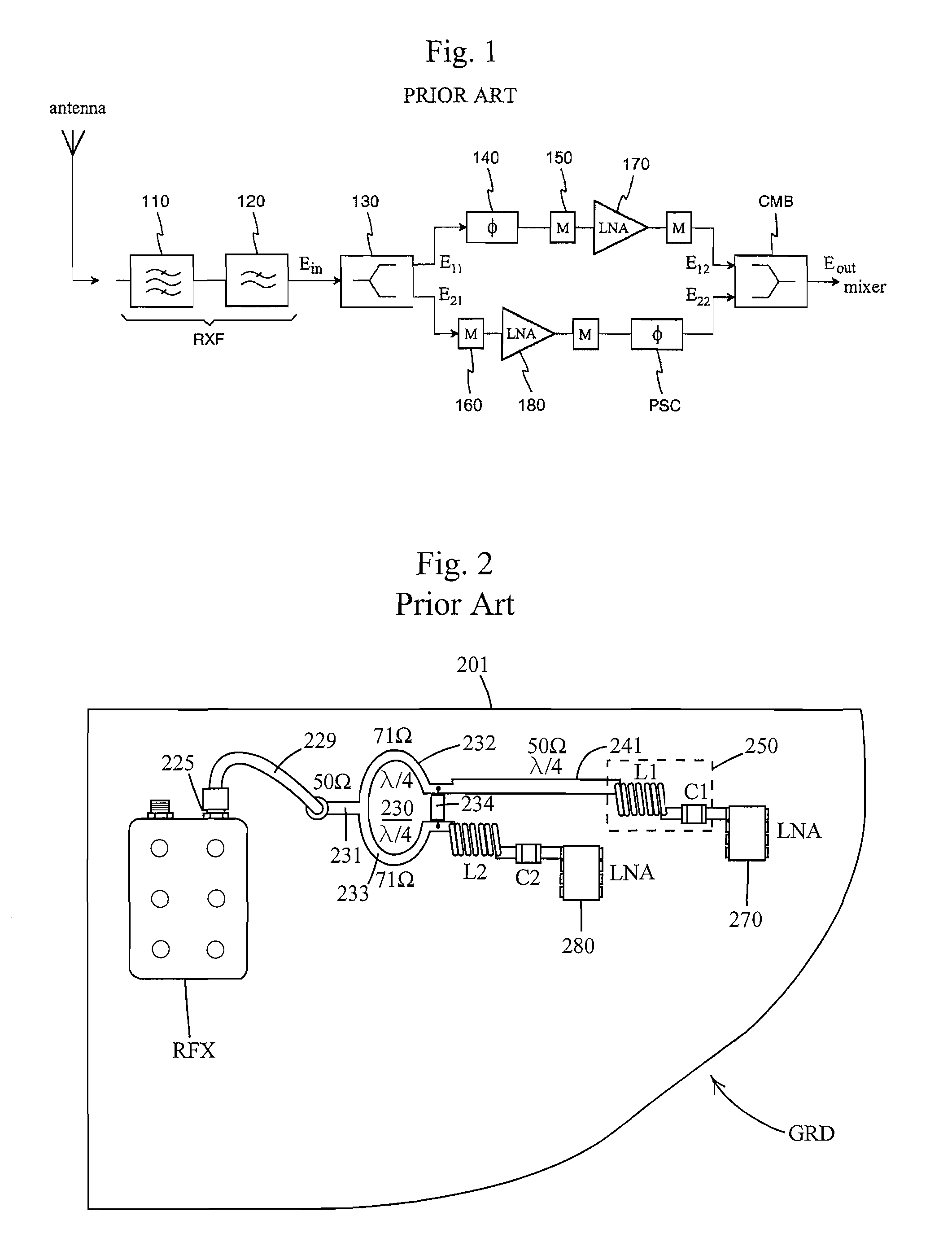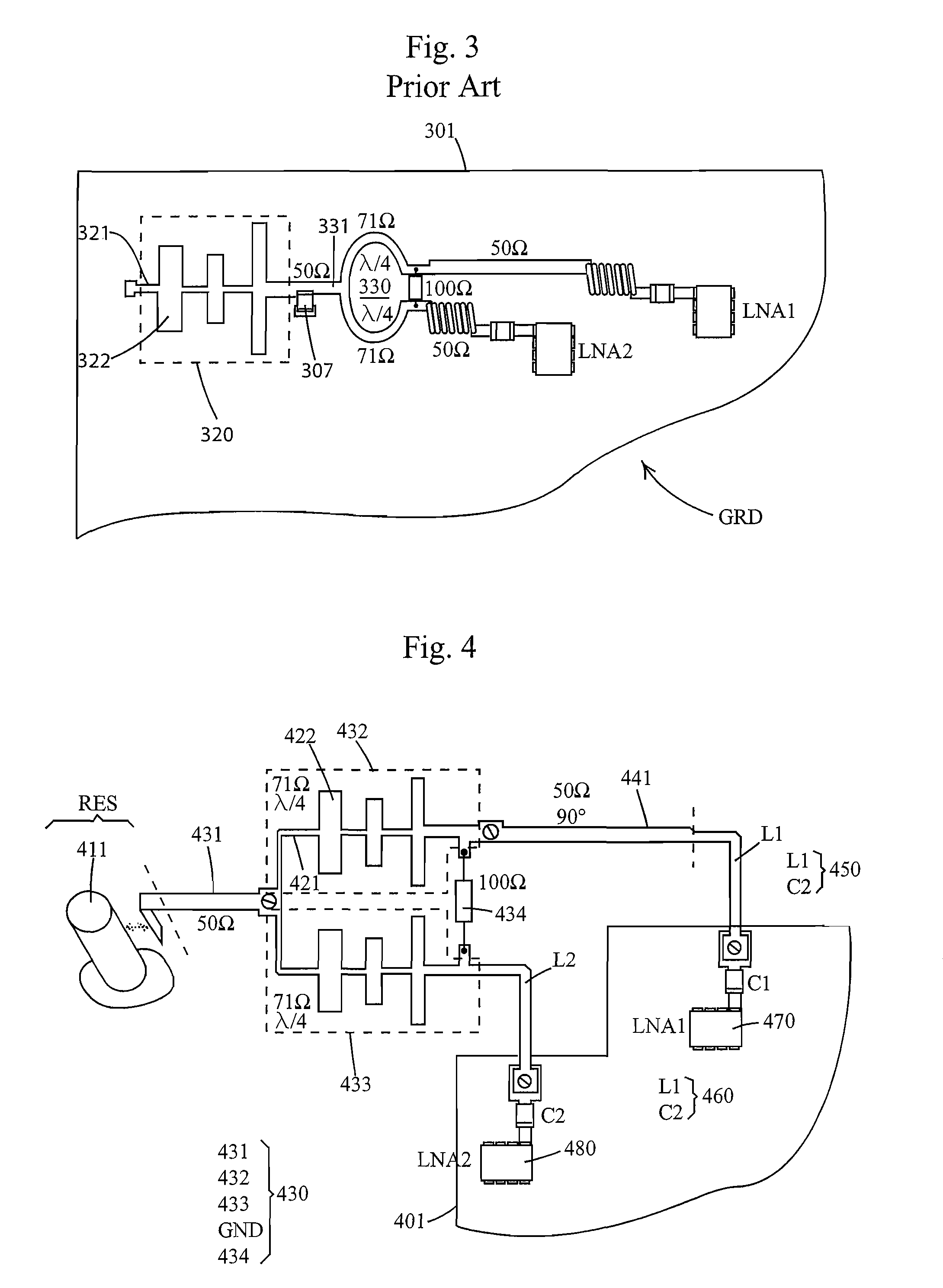Input arrangement for a low-noise amplifier pair
a low-noise amplifier and input arrangement technology, applied in the field of input arrangement for low-noise amplifier pairs, can solve the problems of increasing the noise figure by the same amount, more attenuation in the signal, and reducing the attenuation caused by the transmission path, so as to reduce the loss of the front stage of the receiver before the low-noise amplifiers are reduced, the effect of reducing the loss
- Summary
- Abstract
- Description
- Claims
- Application Information
AI Technical Summary
Benefits of technology
Problems solved by technology
Method used
Image
Examples
Embodiment Construction
[0022]FIGS. 1, 2 and 3 were already explained in connection with the description of the prior art.
[0023]FIG. 4 is an example of the input arrangement of an amplifier pair according to the invention. This implements the same functions as the arrangements of the previous figures, but with a different structure. The filter corresponding to the bandpass filter 110 in FIG. 1 is of the resonator type, of which the inner conductor 411 of its output resonator RES is seen. The input conductor 431 of the divider 430 extends to the cavity of the output resonator. The part of the input conductor 431 in the cavity has an electromagnetic coupling to the output resonator, through which the energy of the signal coming from the antenna is transferred to the divider. Alternatively, the input conductor could be galvanically coupled directly to the inner conductor 411. The divider is of the Wilkinson type, and in addition to the input conductor 431, the first division conductor 432, the second division...
PUM
 Login to View More
Login to View More Abstract
Description
Claims
Application Information
 Login to View More
Login to View More - R&D Engineer
- R&D Manager
- IP Professional
- Industry Leading Data Capabilities
- Powerful AI technology
- Patent DNA Extraction
Browse by: Latest US Patents, China's latest patents, Technical Efficacy Thesaurus, Application Domain, Technology Topic, Popular Technical Reports.
© 2024 PatSnap. All rights reserved.Legal|Privacy policy|Modern Slavery Act Transparency Statement|Sitemap|About US| Contact US: help@patsnap.com










